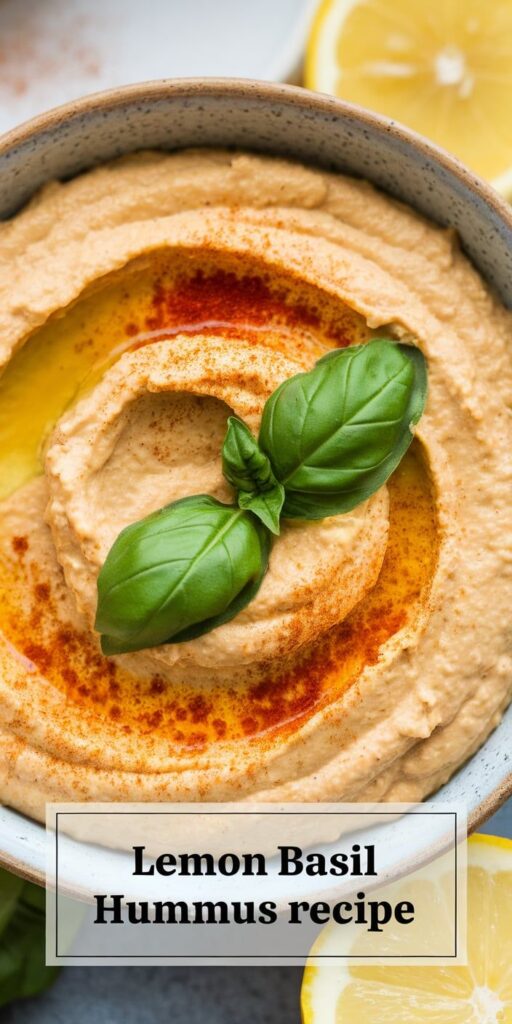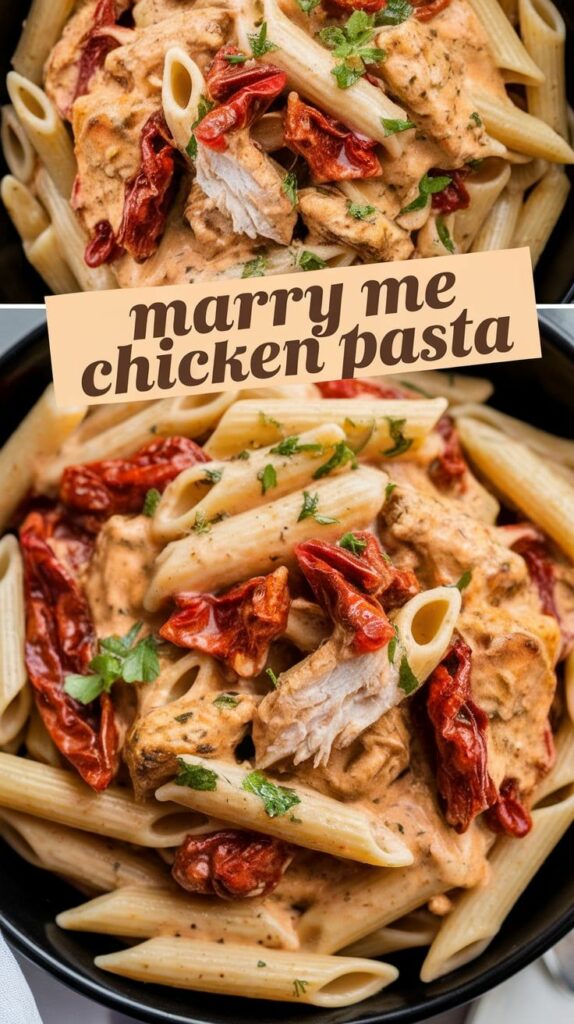Discovering the perfect homemade hummus can transform your snacking experience. My lemon basil hummus recipe brings a vibrant twist to the classic Mediterranean dip that will delight your taste buds and impress your guests.
This unique hummus blend combines the zesty brightness of fresh lemon with the aromatic richness of basil. I’ve crafted a recipe that elevates the traditional chickpea spread into something extraordinary. The secret lies in using fresh ingredients and balancing flavors with precision.
Whether you’re a seasoned home cook or a culinary novice, this homemade hummus will become your go-to recipe for gatherings, quick snacks, or elegant appetizers. The combination of creamy chickpeas, bright citrus, and fragrant herbs creates a Mediterranean dip that’s both familiar and exciting.
Get ready to explore a simple yet sophisticated twist on a beloved classic that will transform your approach to dips and spreads.

Why This Lemon Basil Hummus Will Become Your New Favorite
Discover a healthy hummus recipe that transforms the classic dip into a culinary masterpiece. My lemon basil hummus isn’t just another spread – it’s a game-changing versatile dip that will revolutionize your snacking experience.
Health Benefits of Homemade Hummus
Crafting a healthy hummus recipe at home allows you to control ingredients and maximize nutritional value. Chickpeas provide an excellent source of plant-based protein, fiber, and essential minerals. This unique hummus flavors combination delivers powerful health advantages:
- Supports heart health
- Boosts digestive system
- Provides sustained energy
- Helps maintain healthy weight
What Makes This Version Special
The magic of this lemon basil hummus lies in its extraordinary flavor profile. Fresh basil adds a bright, herbaceous note that elevates the traditional hummus experience. Zesty lemon brings a vibrant citrus kick that makes this versatile dip truly unforgettable.
Perfect Occasions to Serve
This unique hummus flavors combination works beautifully in multiple settings:
| Occasion | Serving Suggestion |
|---|---|
| Casual Game Night | Serve with pita chips |
| Elegant Cocktail Party | Pair with gourmet crackers |
| Picnic Lunch | Pack with fresh vegetable sticks |
Essential Ingredients for Perfect Lemon Basil Hummus Recipe
Creating the ultimate lemon basil hummus starts with selecting high-quality hummus ingredients that will transform an ordinary dip into a spectacular culinary experience. I’ve carefully chosen each component to ensure maximum flavor and nutrition.
The foundation of any great hummus recipe begins with premium chickpeas. I recommend using organic, dried chickpeas that you’ll cook until perfectly tender. Tahini, a rich sesame seed paste, adds depth and creaminess to the base.
- Chickpeas (organic, dried preferred)
- Tahini (raw, high-quality)
- Extra virgin olive oil
- Fresh basil leaves
- Lemon juice (freshly squeezed)
- Garlic cloves
- Sea salt
Fresh basil is the star ingredient that elevates this hummus from ordinary to extraordinary. I always choose bright green, fragrant basil leaves that will infuse the dip with an incredible aromatic profile. The lemon juice provides a bright, tangy counterpoint that awakens all the other flavors.
To achieve the perfect balance, you’ll want to use fresh lemon juice rather than bottled. The zesty citrus notes complement the herbaceous basil beautifully, creating a vibrant and refreshing hummus that will impress anyone who tastes it.
Optional ingredients can include roasted red pepper for extra sweetness, toasted pine nuts for crunch, or a sprinkle of smoked paprika for depth. These additions allow you to customize the hummus to your personal taste preferences.
Kitchen Tools You’ll Need
Creating delicious lemon basil hummus requires the right kitchen tools. I’ll guide you through the essential equipment that will make your hummus preparation smooth and enjoyable. From food processors to storage containers, having the right tools can transform your cooking experience.
Must-Have Equipment for Hummus Preparation
A high-quality food processor for hummus is absolutely crucial. This kitchen tool will help you achieve that smooth, creamy texture everyone loves. Here are the essential tools you’ll need:
- Food processor or high-powered blender
- Sharp chef’s knife
- Cutting board
- Measuring cups and spoons
- Rubber spatula
Optional but Helpful Kitchen Tools
While not mandatory, these additional kitchen tools can elevate your hummus-making process:
- Citrus juicer for fresh lemon juice
- Microplane grater for zesting
- Digital kitchen scale for precise measurements
- Herb scissors
Best Storage Containers for Your Hummus
Proper hummus storage is key to maintaining freshness and flavor. I recommend using airtight containers that will keep your homemade dip delicious for days:
- Glass containers with tight-fitting lids
- Ceramic storage containers
- BPA-free plastic containers with secure seals
Investing in the right kitchen tools will make your lemon basil hummus preparation a breeze. Remember, the quality of your tools can significantly impact the final result of your delicious homemade dip.
Preparing Fresh Herbs and Ingredients
Ingredient prep is the foundation of creating a delicious lemon basil hummus. I’ll walk you through the essential steps to ensure your ingredients are perfectly prepared and bursting with flavor.
For chickpea preparation, you have two primary options: canned or dried chickpeas. If using dried chickpeas, I recommend soaking them overnight in cold water. This process helps soften the legumes and reduces cooking time. Drain and rinse the chickpeas thoroughly before cooking.
- Selecting fresh chickpeas: Choose plump, uniform chickpeas without cracks
- Soaking time: 8-12 hours for optimal softening
- Rinse chickpeas multiple times to remove excess starch
When preparing fresh basil, freshness is key. I always recommend selecting bright green leaves without any brown spots or wilting. Wash the basil gently under cool running water, then pat dry with a clean kitchen towel. To maximize flavor, chop the basil just before adding it to your hummus.
For precise ingredient measurements, use standard kitchen tools like measuring cups and kitchen scale. This ensures consistency in your hummus recipe every single time.
- Use sharp kitchen scissors for delicate herb chopping
- Measure ingredients at room temperature
- Clean and dry all produce before preparation
Proper ingredient prep transforms an ordinary hummus into an extraordinary culinary experience. Take your time, be mindful, and enjoy the process of creating something delicious from scratch.
Step-by-Step Mixing Process
Creating the perfect hummus requires careful attention to your mixing technique. I’ll guide you through each step to achieve a creamy hummus texture that will impress your guests and satisfy your taste buds.
The key to a smooth hummus lies in understanding the delicate balance of ingredients and proper blending methods. My approach focuses on flavor balancing and achieving that silky-smooth consistency everyone loves.
Getting the Right Consistency
Achieving the ideal creamy hummus texture involves several crucial steps:
- Drain chickpeas thoroughly to prevent excess moisture
- Use a high-powered food processor for smooth blending
- Add liquid gradually to control thickness
Adjusting Flavors Like a Pro
Flavor balancing is an art form in hummus preparation. Start with small amounts of each ingredient and taste as you go. Here’s a quick guide to fine-tuning your hummus:
| Flavor Adjustment | Technique | Purpose |
|---|---|---|
| Salt | Add pinch by pinch | Enhance overall taste |
| Lemon Juice | Drizzle slowly | Brighten flavor profile |
| Tahini | Blend thoroughly | Create creamy texture |
Troubleshooting Common Hummus Challenges
Don’t worry if your first attempt isn’t perfect. Here are some quick fixes for common hummus mixing challenges:
- Grainy texture? Blend longer or add more tahini
- Too thick? Incorporate warm water gradually
- Bland flavor? Increase herbs and spices incrementally
My hummus mixing technique ensures you’ll create a restaurant-quality dip every single time. Trust the process, taste frequently, and adjust with confidence!
Creative Serving Suggestions and Pairings
Let me share some exciting hummus serving ideas that will transform your Lemon Basil Hummus from a simple dip into a culinary experience. This versatile appetizer recipe offers endless possibilities for creative presentation and delicious pairings.
- Classic Dipping Options:
- Fresh vegetable sticks (carrots, cucumber, bell peppers)
- Warm pita bread triangles
- Crispy tortilla chips
- Gourmet Hummus Pairings:
- Spread on artisan sandwiches
- Topping for grilled chicken
- Base for Mediterranean salad dressing
I love exploring unique ways to elevate hummus serving ideas. Try using the Lemon Basil Hummus as a vibrant sauce for roasted vegetables or as a zesty spread on breakfast toast.
| Serving Suggestion | Recommended Accompaniments |
|---|---|
| Appetizer Platter | Olives, feta cheese, grilled zucchini |
| Sandwich Spread | Grilled chicken, roasted red peppers |
| Salad Topping | Mixed greens, cherry tomatoes |
These appetizer recipes will impress your guests and showcase the versatility of our Lemon Basil Hummus. The bright flavors pair wonderfully with Mediterranean and fresh summer-inspired dishes.
Pro tip: Experiment with garnishes like fresh basil leaves, a drizzle of olive oil, or sprinkled pine nuts to add extra visual appeal and flavor to your hummus presentation.
Storage Tips and Shelf Life
Preserving the delicious flavor of your homemade Lemon Basil Hummus requires careful attention to storing homemade hummus techniques. I’ll share my expert tips to help you maximize the hummus shelf life and keep your dip tasting fresh and delightful.
Refrigeration Guidelines
When it comes to storing homemade hummus, the refrigerator is your best friend. After preparing your Lemon Basil Hummus, transfer it to an airtight container with a tight-fitting lid. The ideal storage method involves:
- Keeping the hummus in a sealed container
- Placing it in the coldest part of your refrigerator
- Consuming within 4-5 days for optimal freshness
Freezing Instructions
Freezing hummus is an excellent way to extend its shelf life. I recommend using freezer-safe containers or heavy-duty freezer bags. Here are my top freezing tips:
- Leave about half an inch of space at the top of the container
- Smooth the surface to prevent air pockets
- Label the container with the date of preparation
- Freeze for up to 3-4 months
When you’re ready to enjoy your frozen hummus, thaw it in the refrigerator overnight. Stir well after thawing to restore its original consistency.
Signs of Freshness
Knowing when your hummus is past its prime is crucial. Watch for these warning signs that indicate it’s time to discard your dip:
- Sour or off-putting smell
- Unusual discoloration
- Visible mold growth
- Watery or separated texture
By following these storage guidelines, you’ll ensure your Lemon Basil Hummus remains delicious and safe to eat. Proper storage is key to enjoying your homemade creation to the fullest!
Recipe Variations and Customization Ideas
Exploring hummus variations can transform this classic dip into a culinary adventure. I love experimenting with different flavor additions that complement the bright lemon and fresh basil base. Roasted red peppers or sun-dried tomatoes can add a rich, deep flavor that takes the recipe to new heights.
When customizing hummus recipes, dietary restrictions don’t have to limit your creativity. For those avoiding oil, try replacing olive oil with vegetable broth or aquafaba. Protein-conscious eaters might swap chickpeas for white beans or edamame, creating unique texture and nutritional profiles that keep the dish exciting.
Spice lovers can elevate their hummus by introducing unexpected ingredients. A sprinkle of smoked paprika, a dash of harissa, or some finely chopped jalapeños can bring incredible depth to the original recipe. My favorite trick is adding roasted garlic or caramelized onions to create a more complex flavor that surprises and delights taste buds.
The beauty of hummus variations is their incredible versatility. Whether you’re catering to specific dietary needs or simply looking to experiment, this recipe serves as a perfect canvas for culinary creativity. Don’t be afraid to play with ingredients and make the recipe uniquely yours!



